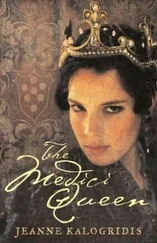For my children. I would walk through fire for you.
Acknowledgments
Thanks for making this book a reality go to my agent, Holly Root, editors Paula Guran and Jennifer Heddle, and many others at Pocket Books whose names I do not know.
Special thanks to Pat Rice and Sasha White for their input on an early version of the first few chapters of this book. I'm afraid little of the original survived rewrites-thank you for that! Also to Ann Voss Peterson for reminding me of things I really shouldn't need reminding of.
I'd also like to thank Rob Francis for answering my fire questions and the Castle Coalition for answering questions on eminent domain, even though eminent domain did not make it into the final book.
Preface
Descendants of the god Ares and nymph Otrera, the Amazons were blessed with strength, longevity, and mystical powers. As their divine bloodline was weakened by mating with humans, they learned to focus and maintain their powers through the use of body decoration, mainly tattoos.
Despite their descent from Ares, the Amazons worshipped Artemis, the goddess of the hunt, forests, and hills, and the womanly concerns of virginity, fertility, and childbirth. As the world outside of their community moved to worship gods over goddesses, their desire to stay separate-and exclusively female-grew.
Dividing eventually into twelve tribes each identified with a protector animal, the Amazons lived in the area around what we now call the Black Sea for centuries. Then the ancient Greeks encountered a few of their settlements. Their stories of a tribe of woman warriors began to draw the interest of the outside world. To survive, the Amazons became increasingly nomadic. Although they dispersed in all directions, most moved to the steppes of Russia.
The animals that had identified their settlements became family totems, a reminder of their past greatness. These totems were tattooed on each member of the tribe, tying them together magically when the Amazons weren't together physically. The tattoos became known as telioses.
Amazons fall into four basic talent groups: warriors, priestesses, artisans, and hearth-keepers. Amazons may have aspects of power from all of the groups, but there is usually one that is obviously dominant. Their personal power tattoo (the givnomai ) is chosen to enhance those powers, helping to lock them into their role for the tribe. It is rare for an Amazon to have significant powers from more than one group.
Warriors possess superhuman strength and flexibility. Priestesses can harness elemental powers-fire, wind, water, earth-without use of objects. Priestesses also call upon the goddess Artemis for guidance for the tribe. Artisans create objects that store power: tattoos, fetishes, and jewelry. The power these objects have is based on what they represent: a bear fetish would provide strength, a coyote stealth, a fox cunning. Some artisans can put the power into the object; others can only create the object and must have assistance from a priestess to embed the power. Home, food, and child care are provided by the hearth-keepers. Their powers are protective and medicinal.
Although not immortal, Amazons do live for hundreds of years and retain a youthful appearance for several centuries.
Even in the New World, the Amazons kept their nomadic ways. The twelve tribes continued to keep a low profile by traveling around the country, much like modern-day gypsies, settling for short periods of time in one of six "safe camps."
Camps are located on enough land to provide a buffer between them and the human world. Each has a hearth-keeper, priestess, and queen (from the warrior talent group) assigned to them by the high council. These queens maintain order within the camp and work to protect it from human detection through both magical and mundane ways. They stay longer than the other Amazons, but still shift to a new camp every few years. Individual Amazons move freely between these camps, never settling for too long in one place.
Amazons mingle with the human population on a limited basis. Just like their ancestors, they take human lovers but do not marry. Since most Amazons believe themselves superior to humans, most have no issues with stealing from humans or conning them out of money. Their seminomadic lifestyle aids them in evading confrontations that might come from such an existence. A few do offer legitimate-or semi-legitimate-services at area fairs and bazaars such as selling craft items, such as fetishes and jewelry, telling fortunes, or offering self-defense classes. They do not, however, take jobs that require them to work day-to-day in one place or get to know any humans in depth. If anyone begins to get too close, they move on.
The Amazons have never trusted men, nor brought them into their camps. They even feared their own male offspring might rise up and try to control them, as Greek males had tried in the past. Because of this fear, their male children were put to death. Over time they stopped the killing and instead maimed the infants by breaking an arm or leg, then leaving the boys where humans could find and raise them.
Some of these offspring survived; many didn't.
Around the turn of the nineteenth century, Bubbe Saka, a priestess, was instrumental in stopping all of this. Male children thereafter were left unmaimed at human churches and hospitals.
Although the Amazons were unaware of it, even before the maiming stopped, these sons had begun gathering together. Also unknown to the Amazons, their sons possessed similar powers to their own.
Through an encounter (told in Amazon Ink ) with Melinappe (Mel) Saka-Bubbe Saka's granddaughter and an Amazon who had left the tribe-the Amazons discovered both the sons' existence and their powers.
For the first time in their history, they are forced to face the fact there is a group who can match them power for power.
What the Amazons don't know is if that group will choose to try and destroy them.
Chapter 1
Full noon sun in the middle of a busy downtown street, and I was about to steal a baby.
An older white two-door, with a bumper that obviously wasn't original to the car, angled its way into a parking spot. I whistled, signaling the two warriors I'd brought with me that our target was close.
Thea Caras, our new high priestess, opened the door to our Jeep and set one foot on the pavement. I motioned for Tess, a hearth-keeper and our driver, to be ready. Then I followed suit, trying to look casual, although Thea with her full-sleeve tattoos was not your usual downtown Beloit shopper. For that matter neither was I, nor were the two warriors hidden in shaded doorways nearby. Still, I grabbed a hoodie from the seat beside me and threw it at Thea. She frowned but pulled it on.
It was the middle of July and hot, but better she be sweaty than flashing her unusual art.
The men took their time getting out of the vehicle. I glanced over my shoulder, checking to make sure the fifth member of our team, Lao, a three-hundred-and-fifty-year-old hearth-keeper, was in position to take the child once we had retrieved her from the sons who had stolen her.
Finally the men exited the car. The tallest reached into the backseat and pulled out the carrier. I could see the baby inside, fast asleep with a blue-and-white checked blanket tucked around her. The shorter of the two, maybe six foot three to the other man's lanky six six, scanned the street. I ducked down in a pretense of checking my tire. Thea cut around behind the back of the Jeep to approach them from the street.
Back on my feet, I signaled Areto. She was short for an Amazon, with no visible tattoos. Dressed in mom shorts and a scoop-necked T-shirt, she blended nicely with the humans. Fumbling in a purse we'd picked up at Goodwill before setting this stage, she walked between the sons and stopped.
Читать дальше











